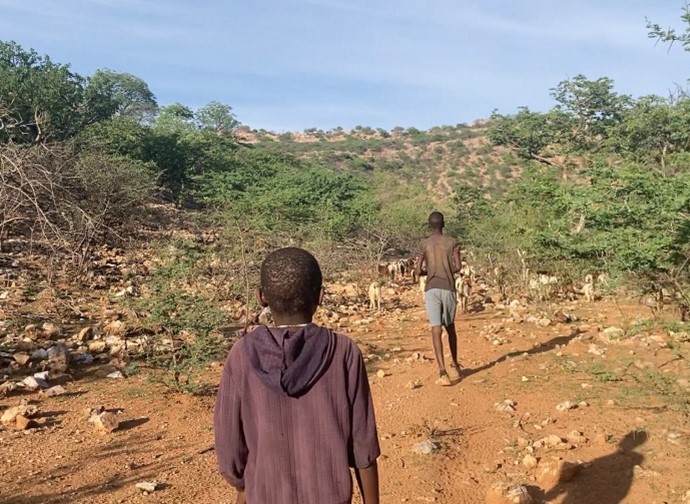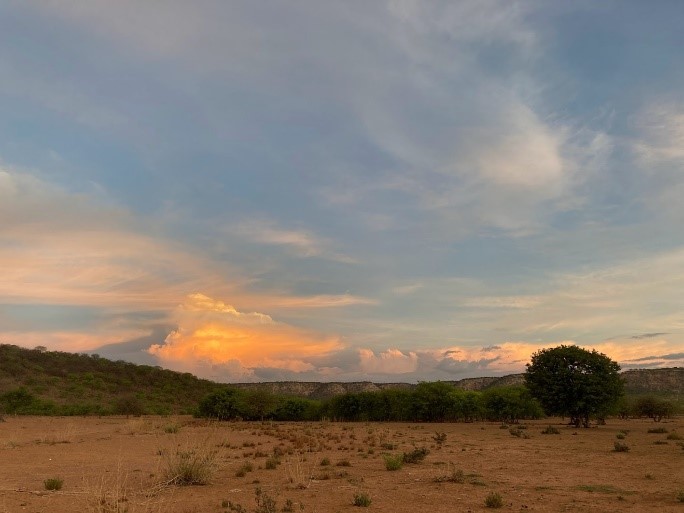Report on the Dispatch to Namibia: Acquiring knowledge: The study of children’s livelihood and indigenous knowledge in Ovahimba
Kyoto University
Graduate School of Asian and African Area Studies
Division of African Area Studies
Shino Yamamoto
Dispatch Period: 25th September 2023−26th December 2023
Destination of Dispatch: The Republic of Namibia
Key Words: children, socialization, nomadic life, daily activities, learning knowledge
1. Research topic
As part of the Scientific Research (S) “Ecological future making of childrearing in contact zones between hunter-gatherers and agro-pastoralists in Africa”, this study aims to clarify how children adapt to society and become culturally relevant through their daily lives. For this reason, I conducted the field survey and interviews to determine the reality of children’s lives in the Ovahimba society in the arid northern region of Namibia.
2. Content of the survey
The purpose of this study was to clarify how children and the factors that influence them are involved in the lives of children, to achieve the above-mentioned research questions. I also conducted interviews with people living in the field to study how children’s lives change from generation to generation.
During the visit, I stayed in three villages and recorded the lives of children in schools, at home and in livestock camps. In Windhoek, I visited relevant institutions to renew my research permit and collected information in National libraries and National archives.
3. Impressive Experiences
A particularly impressive experience was the observation of cattle slaughter and dismantling operations. I have conducted research on people whose livelihood activity is pastoralism. The process of turning cattle into beef is rarely observed in Japan. The observation of cattle slaughter and dismantling on this mission was an excellent experience for the reporter, as I had felt the need to see cattle slaughter and dismantling work since my research on Japanese dairy farmers.
I had seen small livestock slaughter and dismantling before, such as chickens and goats, but had never seen bovine slaughter and dismantling. Slaughtering and dismantling of cattle were different from other animals in terms of work content and time, and was very difficult. Slaughtering and dismantling work at weddings is men’s work and is mainly carried out by men in their 20s to 40s. However, the work on a large bovine animal required the cooperation of more than 10 persons, and the work was carried out over several hours. In addition, I was able to see moments of teaching and learning that we do not see in everyday life, such as older men instructing the younger ones in the dismantling process.
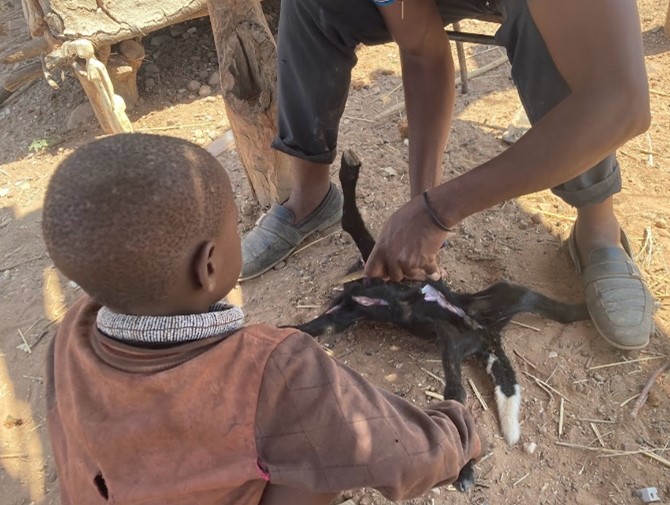
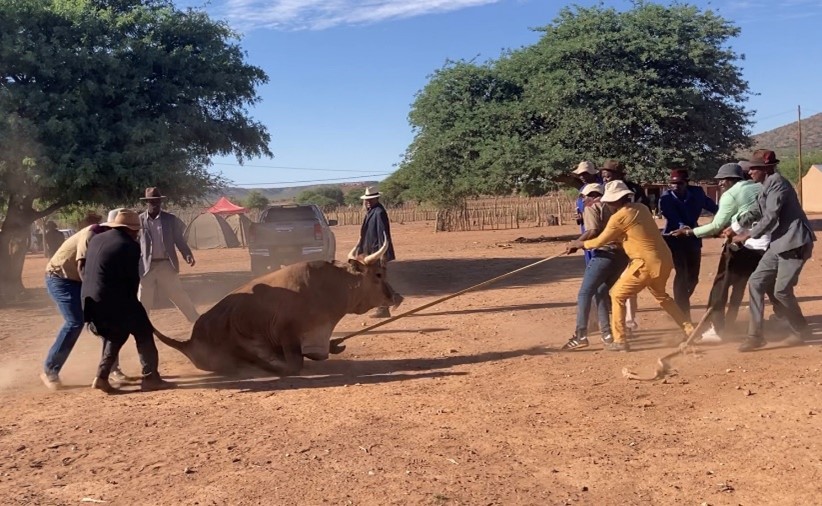
4. Observations on children and various factors surrounding children
The main purpose of this study was to investigate how children and various factors surrounding them interact. Following on from the previous study, the research was conducted at home, mainly in close contact with the girl’s life and activities. And I did observations about the relationships on the child-teacher and the child’s situation at school.
The participation observation allowed me to observe not only the children who support their lives, but also how parents attributed their children’s behavior to their deepened understanding of the local language.
Furthermore, through the research in the school, it was possible to observe children outside the home and the relationship between children and teachers. I took interviews in the villages where I stayed and interviewed about life histories and the changes in their lives at different ages. Furthermore, in Windhoek, I was able to obtain a research permit until the end of 2024, as the result of the renewal procedure for the research permit.
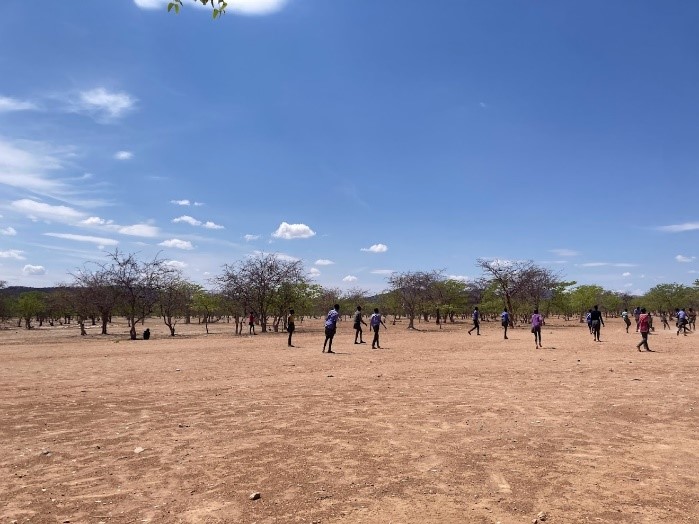
5. Future Work
During this stay in the village, it was also possible to observe the boys’ livelihoods. However, as the amount of data was overwhelmingly different between girls and boys, it is a future task to closely follow the boys’ lives and collect more data.
